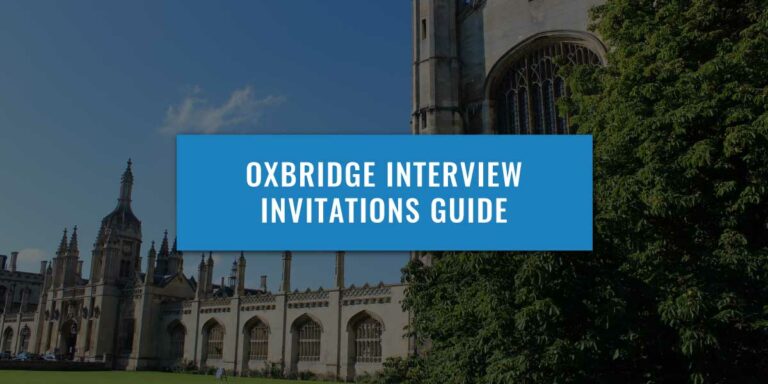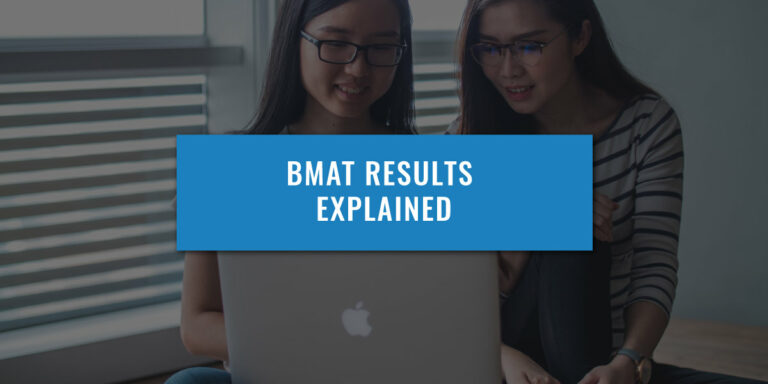As of 2024, the BMAT will no longer operate for Medicine applicants. Applicants for all UK medical schools will be required to sit the University Clinical Aptitude Test (UCAT) for 2025 Entry. Find out more in our BMAT/UCAT 2025 Guide.
BMAT 2018: All About this Year’s Exam Process and Results
By now, most of you should have already received your results from the BMAT 2018 exam. So, how did you do? Firstly, to those who have done amazingly well on their BMAT results – congratulations! For those, who didn’t quite meet the grades, don’t worry. There are a lot of options out there.
In this article, we’ll take an overview of the BMAT 2018, what the exam entailed, the results, and how they compare to the BMAT results in the past…

Reminder: What Were the Key BMAT 2018 Dates?
There are multiple test sittings of the BMAT per academic year. Applicants are only allowed to sit one of them and your mark for this will be used for all universities who consider it.
For UK universities, it is the September and October test sessions which are used as part of the application process. Before the exam, you should have consulted your university’s website to ensure that you are in compliance with their requirements. For instance, Oxford only accepts the BMAT October sitting, not September!
September Schedule:
| Key Dates from September BMAT 2018 |
| 25 June: |
| The extranet for the assessment centres officially opens. |
| 12 August: |
| Registration deadline at Midnight, BST. |
| 1 September: |
| Test date: this MUST be carried out in a registered test centre. Check with your school to see if it is already authorised! |
| Early September |
| The UCAS website begins to take university applications. Be as early rather than late to give yourself more time to write a better UCAS application form! |
| 21 September: |
| Results released to test-takers via Metritests; you will have a PDF version of the results |
| 15th October |
| The last day to submit your UCAS applications if you have not already done so! |
| 20 October: |
| Deadline for sharing results with UK institutions |
October Schedule:
| Key Dates for October BMAT 2018 |
| 1 September: |
| The extranet for the assessment centres officially opens, allowing your Exams Officer to put in candidates’ entries from this date onwards. |
| Early September |
| The UCAS website begins to take university applications. Be as early rather than late to give yourself more time to write a better UCAS application form! |
| 1 October: |
| Registration deadline at Midnight, BST. |
| 15 October: |
| Late registration date. The last day to submit your UCAS applications if you have not already done so! |
| 31 October: |
| Test date: this MUST be carried out in a registered test centre. Check with your school to see if it is already authorised! |
| 23 November: |
| BMAT Results released to test-takers via Metritests; you will have a PDF version of the results. These will be automatically shared with the universities you have applied to. |
The Format
A breakdown of the BMAT exam format:
Section 1 – Thinking Skills. This section asks you to answer 32 questions in 60 minutes, testing your problem solving and verbal reasoning.
Section 2 – Scientific Knowledge and Applications. You are required to answer 27 multiple choice questions in 30 minutes, testing your scientific knowledge and mathematical ability.
Section 3– Writing Task. This is a 30-minute short essay, where you took your pick from a choice of 3 questions. As with essays in general, the candidate is being tested on their ability to develop, communicate and present persuasive and concise arguments.
How important is the BMAT exam?
The importance will vary from university to university; at Oxford, it has a 50% weighting, alongside GCSEs, in shortlisting candidates for interviews. Combining them in a matrix, students are ranked in order of ability with the top being invited to Oxford in December.
In Cambridge, the process is less centralised and each college has their own process. Additionally, Cambridge is committed to interviewing 90+% of their candidates, which is 3 times as many as at Oxford!
At Imperial, there is a minimum cut off mark for securing an interview; this is set after the BMAT results are collected, but last year were 4.1 in section 1, 4.2 in section 2 and 2.5C for section 3.
Read more about the Imperial BMAT cut off for 2018 >>>
Please check with your institution to clarify the exact importance of the BMAT!

How are the Scores Marked?
For Section 1 and 2, applicants are given ONE mark per correct answer. The BMAT awards you 1 mark per correct answer from each question in Section 1 or 2. This is then converted into a uniform scale, like UMS scaling, from 1.0-9.0. Typical candidates will score 5, with the strongest candidates scoring 7.0 or above.
To the right is an example of a typical converter (Section 1, Nov 2017).
For Section three, the mark is based on two criterions:
- Quality of the Content
- Quality of English
These are then assessed on a 1.0 – 5.0 and A-E grade. For example, 5A would then represent the top possible grade.
The breakdown of these grades are further explained in our recent blog about the BMAT results 2018.
What do these scores actually mean? Read our article to find out more >>>

How do your scores compare to last year?
We’ve conducted an analysis of the scores given from the BMAT 2017. The data is plentiful and readily available from historical results. Below we’ve featured a snapshot of the results:
Section 1: 2017 Results
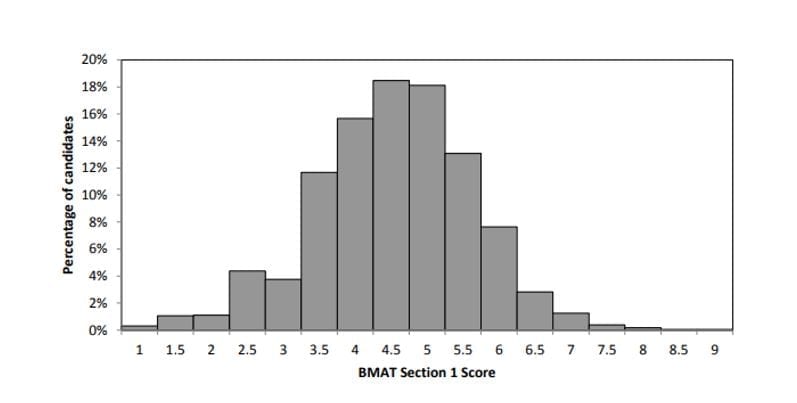
Section 2: 2017 Results
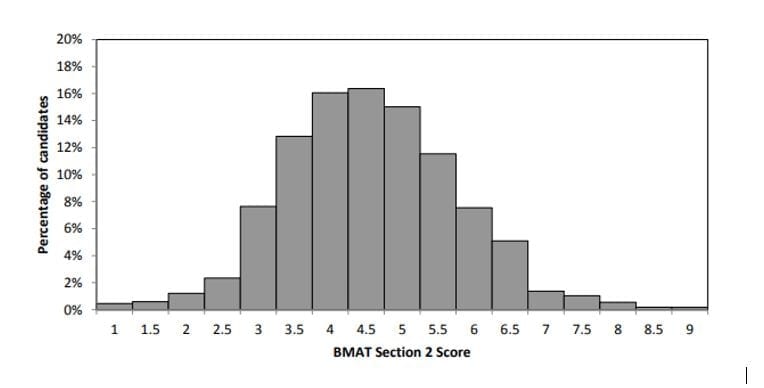
Section 3: 2017 Results
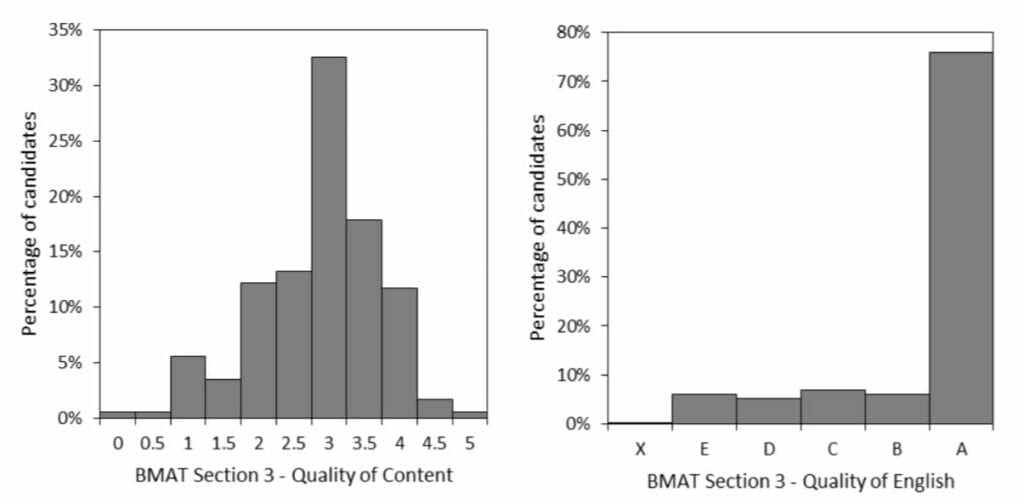
We can see that the median BMAT scores in Section 1 and 2 typically sit in the range around 4.5. The BMAT has been designed as such that the average candidate will score in the 4-5 range, so this is to be as expected.
Moving onto the Section 3 marks, we can see that most candidates will also score a middling Quality of Content mark, reflecting the strengths of their essay, whilst most will score an A in their quality of English. The criteria for this A grade is fluency, correct grammar and skillful use of vocabulary which will come naturally to native English speakers, who will make up the majority of the examinees.
Further information is freely sourced and available from Cambridge Admissions testing.
Analysis on the Successful Candidates
The BMAT is employed not only as a cut off mark for the interviews in many places but also as part of the overall assessment process. Candidates who score highly in the BMAT will stand a better chance of being offered a place at their chosen medical school.
In general, differences in BMAT courses can be attributed to the following:
Course Competitiveness – Medicine may be more competitive at certain universities than others
Course – Generally, Biomedical Sciences and Dentistry are less competitive than Medicine courses, with this being reflected in the average marks.
Weighting – Different universities and departments may weigh the BMAT differently as part of the admissions process.
The average successful Biomedical Oxford applicant in the 2016 cycle hence scored a mark corresponding to roughly the 25th Percentile, the 35th percentile and the median mark for Section 1, 2 and 3 respectively.
In contrast, the average successful Medicine Oxford Applicant in the 2016 cycle score a mark corresponding to roughly the top 20th percentile, the 15th Percentile and the 35th percentile for Section 1, 2 and 3 respectively.
Conclusions
The BMAT is important not only for securing interviews but for proving that you have the aptitude required to be a successful medic at university. We hope, after reading this, that you have more understanding of where your score fits into the overall cut off marks.
For further advice and help in the next stage of your medical applications- the interview(!) – can be found at UniAdmissions where we have some great medical interview programmes as well as a bestselling medicine interview guide that can get you up to speed before the day. There are still places left but they sell out fast so get in quick!
If you want to have a chat with one of the team, then please also feel free to get in touch.
What is a Good BMAT Score?
Are you still worried that your score isn’t good enough? Don’t worry. We’ve detailed how the BMAT is scored, what is a good BMAT score and what other options are available if you don’t quite reach the grade. Find out more about the BMAT results 2018 and read the articles here. Or, for further admissions news and interview tips check out our blog. We also have an extensive range of past papers for the BMAT, which are freely available for you to request and download.





